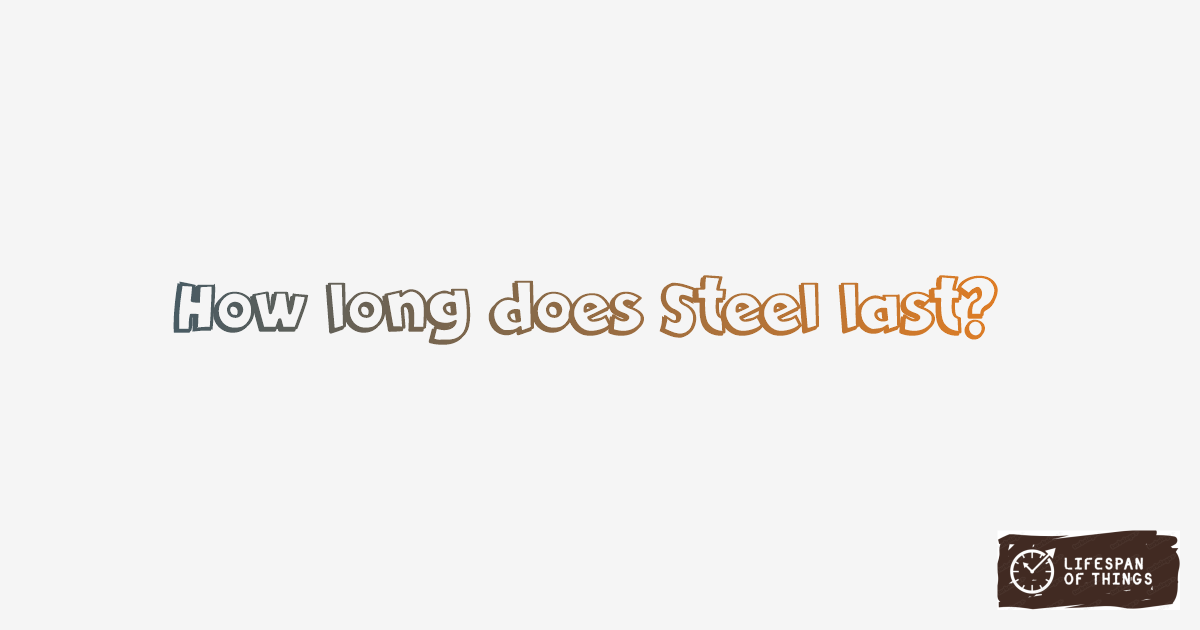
50 - 100 Years
Lifespan of Steel is 50 - 100 Years. Steel's durability and strength make it a long-lasting material that can last for decades with proper care. Factors like exposure to moisture, chemicals, and physical stress can affect its lifespan. Regular maintenance and protective coatings can help extend the longevity of Steel.
Useful Information
Steel is a strong and versatile metal known for its durability and high tensile strength. It has excellent heat conductivity and is widely used in construction, automotive, and manufacturing industries. Different types of Steel include carbon Steel, alloy Steel, and stainless Steel, each with unique properties suited for specific applications.
Explore the different types of ferrous metals such as cast iron, carbon steel, and stainless steel, each with specific properties and uses.
Steel is extensively used in various industries such as construction for beams, frames, and reinforcement. It is also used in manufacturing machinery, tools, and equipment due to its toughness and machinability. Steel's affordability and recyclability make it a sustainable choice in the production of consumer goods and packaging materials.
Steel's durability is influenced by factors like exposure to moisture, temperature fluctuations, and corrosive substances. Proper maintenance, such as regular cleaning and rust prevention, can help prolong the lifespan of Steel. Coating Steel surfaces with protective paints or galvanizing can enhance its resistance to environmental elements.
The production of Steel involves energy-intensive processes like smelting and refining iron ore, which contributes to carbon emissions. However, Steel is highly recyclable and can be reprocessed multiple times without losing its properties. Using recycled Steel helps reduce the demand for virgin materials and minimizes environmental impact.
To maintain Steel, clean it regularly with mild soap and water to remove dust and dirt. Avoid abrasive cleaners that can scratch the surface and cause corrosion. Apply rust-resistant coatings or paint to protect Steel from moisture and oxidation. Storing Steel in a dry and well-ventilated area can prevent rusting and prolong its lifespan.
Lifespan Comparisons
| Compared Item | Comparison Description |
|---|---|
| Lifespan of Cast Iron | Steel and cast iron have a similar lifespan, lasting for several decades without significant difference in longevity. |
| Lifespan of Wrought Iron | When it comes to durability, wrought iron and steel are neck and neck, offering a lifespan of several decades each. |
| Lifespan of Carbon Steel | Carbon steel and steel share a similar lifespan, ensuring longevity and resilience in various applications. |
| Lifespan of Stainless Steel | Stainless steel embodies the durability of standard steel but with added corrosion resistance, making it a lasting choice for many purposes. |
| Lifespan of Bronze | Bronze mirrors the longevity of steel, offering a robust and long-lasting material for diverse uses. |
| Lifespan of Brass | Brass and steel both provide lasting durability, ensuring longevity in different applications. |
| Lifespan of Nickel Alloys | Compared to steel, nickel alloys have a slightly shorter lifespan, but still offer decent durability for various uses. |
| Lifespan of Titanium Alloys | Titanium alloys, while durable, have a shorter lifespan than steel, suitable for applications prioritizing strength over longevity. |
| Lifespan of Lamb | In contrast to steel, lamb has a significantly shorter lifespan, best enjoyed fresh for its unique flavor. |
| Lifespan of Salmon | Salmon, like steel, has a limited lifespan, requiring quick consumption to savor its freshness and quality. |
| Lifespan of Tuna | Tuna's lifespan is short compared to durable materials like steel, needing prompt use to enjoy its taste and freshness. |
| Lifespan of Spinach | Spinach, unlike steel, has a shorter lifespan, ideal for quick consumption to benefit from its nutritional value. |
| Lifespan of Carrots | Compared to steel, carrots last longer before spoilage, offering a longer shelf life for convenient use. |
| Lifespan of Broccoli | Broccoli, with a shorter lifespan than steel, should be consumed promptly to enjoy its freshness and nutritional benefits. |
| Lifespan of Potatoes | Potatoes have a lifespan longer than steel, providing an extended period for usage before spoiling or decay. |
Frequently Asked Questions
Lifespan of Steel is 50 - 100 Years.
Applying rust-resistant coatings or paint can protect Steel from moisture and oxidation, prolonging its lifespan.
Steel comes in various types such as carbon Steel, alloy Steel, and stainless Steel, each with unique properties suited for specific applications.
Steel is extensively used in construction for beams, frames, and reinforcement, as well as in manufacturing machinery, tools, and equipment due to its toughness and machinability.
The production of Steel involves energy-intensive processes contributing to carbon emissions, but using recycled Steel can reduce environmental impact.
Regularly clean Steel with mild soap and water to remove dust and dirt, avoid abrasive cleaners that can scratch the surface.








